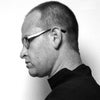
I've known about New York painter Karen Kaapcke in a diffuse way for some years now. I first thought specifically about her work last year. I was painting a portrait of the back of a head at the time, and this recalled to me her remarkable back-of-head portraits.
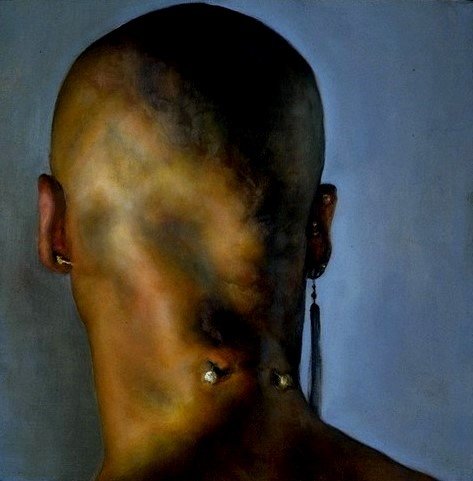
Karen Kaapcke, Destiny, 12"x12", oil on linen, 2008
I got in touch with her to ask if I could use her paintings for a piece I wanted to write about painting the backs of heads; she said yes, I wrote the piece, and in the way of things, I kept up with her, interested in where she was going as an artist. An important bit of background for this story is that Kaapcke comes out of a very high-polish representationalist tradition. Here's a drawing of hers from some years back:
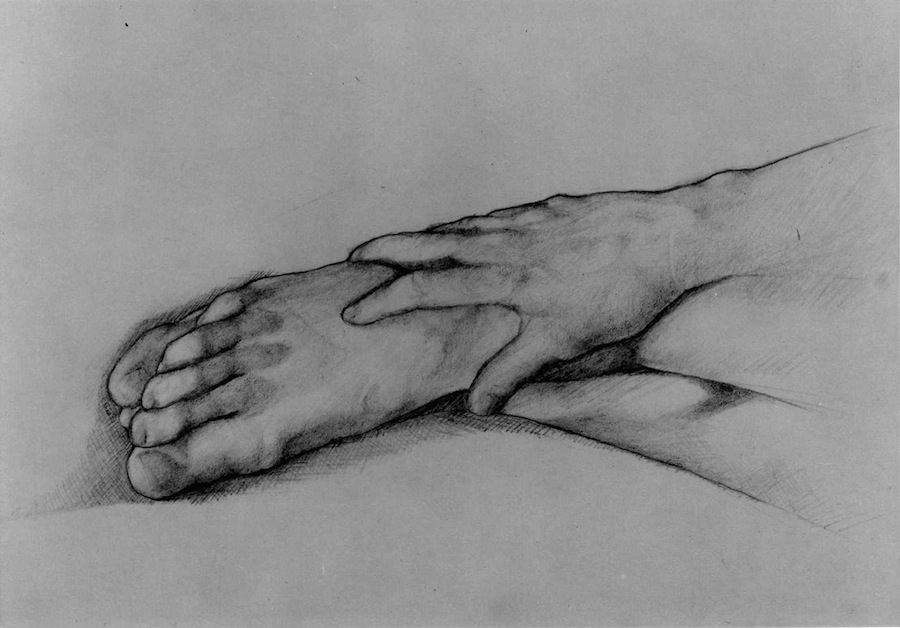
Karen Kaapcke, Hand and Foot Study, 11"x18", graphite on paper, 1999
But when I was starting to follow her work, it was already changing. This is a painting she made not long after I first contacted her:
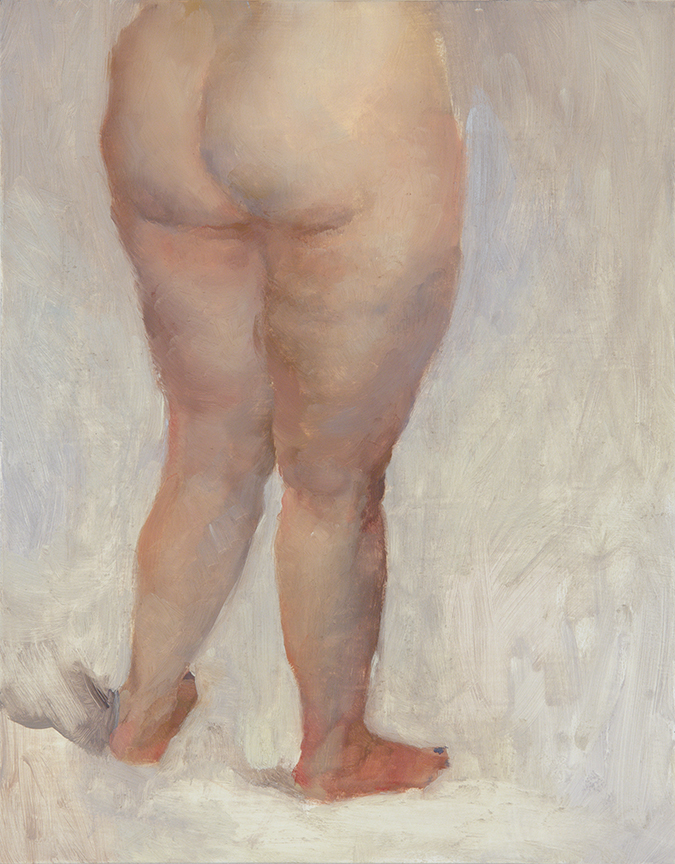
Karen Kaapcke, Phases of Lisa III, 6"x6", oil on panel, 2011
Notice how much more loosely the paint is handled here than it is in the back-of-head portrait, how comparatively crude the drawing is. In this context, "crude" is not a term of disparagement -- I believe that crudity is one of the most powerful vehicles of force and presence in painting. Doing it right is hard as hell. Kaapcke's looser work reminds me of Morandi's mark-making. He used very similar tools to demonstrate the overwhelming themselfnesses of the simplest objects:
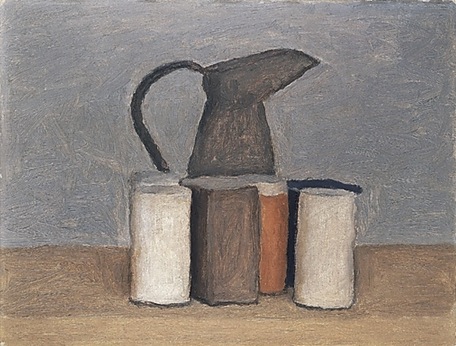
a Morandi still life
Now, I've been chatting with you folks in the comments section for a while now, and I feel like I know you a bit, and I think some of you are going to say you like Kaapcke's highly rendered drawing more than her loosely painted figure. And that's fine. But what we're here to explore is something really fascinating: how one turns into the other. So work with me, and I promise we'll have some interesting things to think about.
I myself saw the looser paintings during a period when I wasn't in much actual contact with Kaapcke, and I couldn't ask her what the devil she was about. By the time circumstances threw us into one another's orbits again, it was the fall of 2011. The season is important, because Kaapcke was hanging out in Zuccotti Park, with the Occupy protesters.
What happened was, she followed the news, as we all do, and saw what was going on, and got right on a subway with her brushes and easel. She turned up at the protests and began painting. She developed a body of work even less polished than the Lisa paintings. Consider her Occupy Wall Street #2:
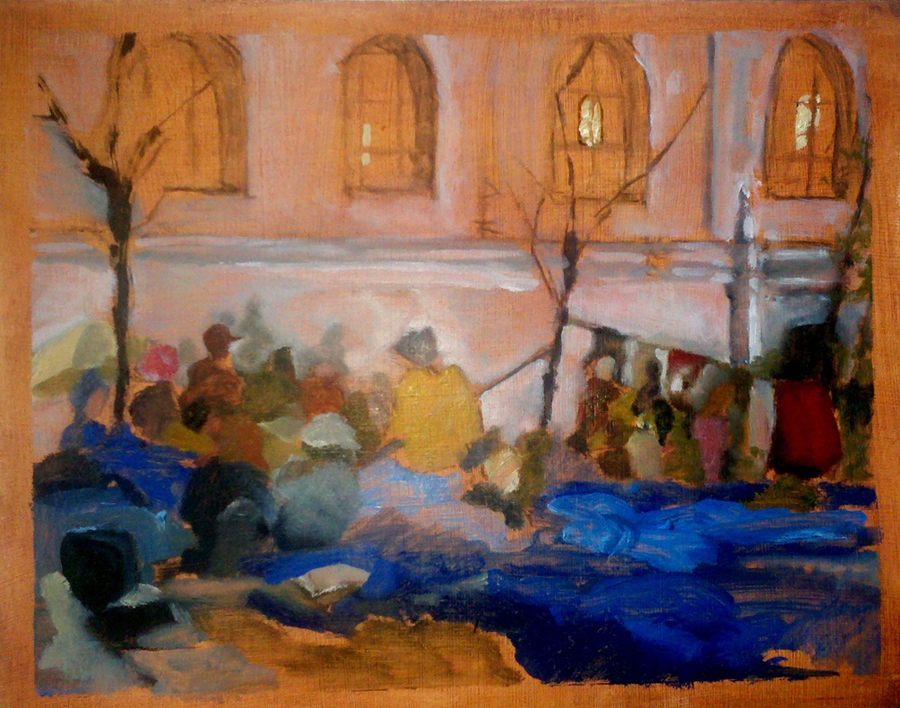
Karen Kaapcke, Occupy Wall Street No. 2, 9"x11", oil on board, 2011
This is as much expression as observation, a clash of oranges and blues that records only the most mimimal notes of the scene, emotionally parsed into a semi-legible image of a building and the camp outside it. A few days later, she went farther still:

Karen Kaapcke, Occupy Wall Street No. 4, 6"x6", oil on board, 2011
Here the tarps and umbrellas of the camp turn into rhythmic dashes of color, the trees and city and sky bare scrubbed-in washes. The old impressionist trick comes to the fore: suggestion of movement through shattering of the surface. What Kaapcke saw serves as the barest armature for her feelings about what she saw. These feelings are nothing you could express in words. They take the form of visual material, of the painting. To my eye, she is training herself to speak.
So, I caught up with her, and I asked, "What is this that you're doing?" And she said, "I'm trying to eliminate the stupid. I don't want to paint stupid things anymore." I said, "I think I get it, but when you say 'stupid,' what do you mean?" She frowned and thought about it, but couldn't elaborate.
Let me elaborate on what I thought, then. At this point, Kaapcke had entered a zone every artist hopes to enter. We build up our skills, and pore over our images and what they mean to us, and those of us who are serious about art as a profession do the same thing professional authors do -- we develop the ability to be creative on demand. But this is not quite so much as inspiration. We are all hoping that one day, we will be picked up and flung headlong into some revelation, some transformed way of doing things.
Kaapcke said, "I am trying to eliminate the stupid." She was undergoing a crisis. What had been sufficient before was no longer sufficient. This happens to many of us. And in most cases, we flail a while, until the sting of insufficiency dulls, and then we return to our old methods -- because, hey, we know they work. It is not important that Kaapcke found her old methods insufficient. What is crucial is that she found a way to throw them out. She gave up her massive control and all her skill, and started as if she were on the first day. In Zuccotti Park, events moved too quickly to permit stable, classical drawing. In the motion, the interstices between tableaux, the fragmented impressions of color and air and form, she recognized what really mattered to her, and discovered her way forward.
The Occupy paintings do not represent the high-water mark of Kaapcke's transformation. They represent the start of it. Afterward, she turned to charcoal and paper. It's an interesting choice; charcoal does not want to yield detail. Kaapcke was not interested in detail any more than charcoal is. She was seeking the core of things in every subject she tackled. By using charcoal, she avoided the temptation of detail.
She turned her attention to the scaffolding around her apartment building, a semi-permanent installation since it takes ages to re-point 21 stories of brick. Studying the scaffolding, she said, "What am I looking at, really? What is important here?"
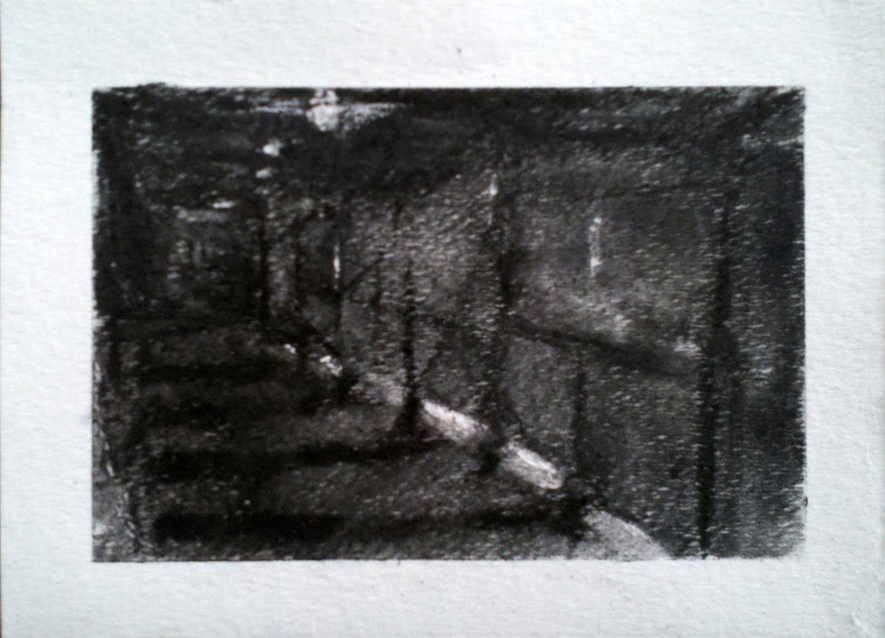
Karen Kaapcke, Scaffolding 3 (stairs between building 4 and 5), 5"x7", charcoal on paper, 2012
Look at how little has made it to the paper here -- just a few lines, some bright spots, a tonal gradient. And yet she has isolated those elements which the mind most retains as characteristic of scaffolding in daylight: the electric overheads, the perspectives, the beams, the glow through the mesh and the glare under its edges. Reproducing these, she catches not the look of scaffolding, but the texture of its experience.
Exploring the reductive universe she was creating, Kaapcke continued to eliminate the stupid, at the same time that she began to use her drawings as structural elements in multi-drawing compositions. Consider Little Gidding, one of her "Four Quartets" series produced this summer:
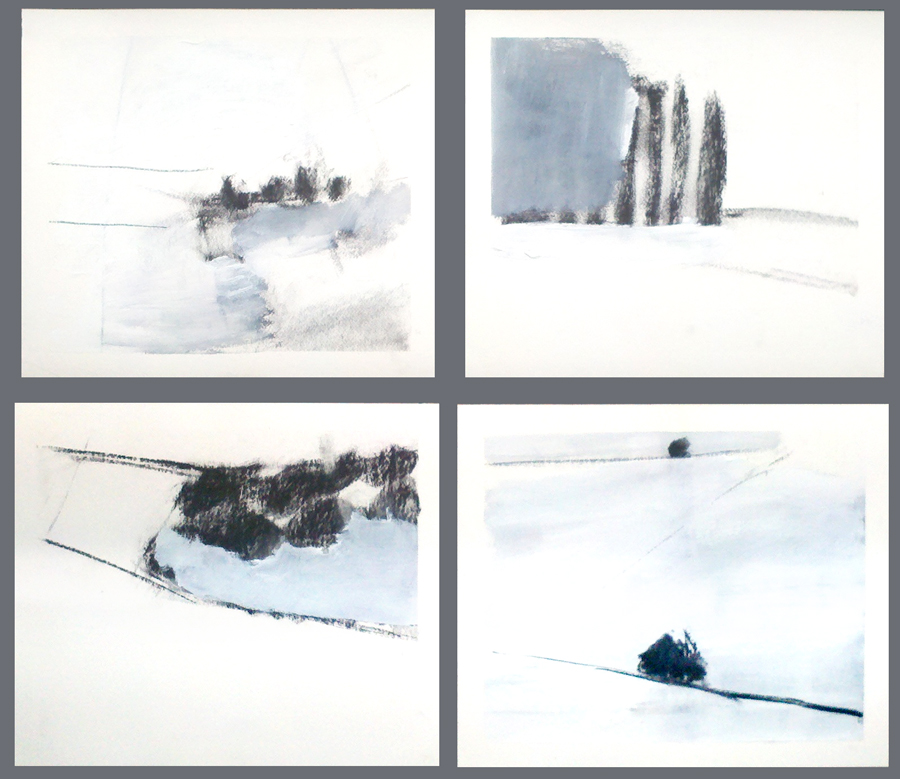
Karen Kaapcke, Little Gidding, charcoal and gouache on four sheets of paper, 2012
The elements of landscape remain in their merest of forms here: trees, bushes, fields, sky. But so much has been effaced -- even in the course of composing, swipes of gouache come in and partly unsay that which has been said. The least possible representation remains, and yet the force of the work continues to amplify. This is partly a matter of stepping down to the crude mechanisms of visual-cognitive hardwiring: edge-seeking, contrast-seeking animal perception. But these brute elements are orchestrated by the most sophisticated of hands, of eyes, to evoke light, air, smell, memory.
Finally, Kaapcke makes a point reminiscent of Hokusai, in the bottom right panel of Burnt Norton:

Karen Kaapcke, Burnt Norton, charcoal on four sheets of paper, 2012
What did Hokusai say? He said:
From the age of 6 I had a mania for drawing the shapes of things. When I was 50 I had published a universe of designs. But all I have done before the the age of 70 is not worth bothering with. At 75 I'll have learned something of the pattern of nature, of animals, of plants, of trees, birds, fish and insects. When I am 80 you will see real progress. At 90 I shall have cut my way deeply into the mystery of life itself. At 100, I shall be a marvelous artist. At 110, everything I create; a dot, a line, will jump to life as never before. To all of you who are going to live as long as I do, I promise to keep my word. I am writing this in my old age. I used to call myself Hokusai, but today I sign myself 'The Old Man Mad About Drawing."
Most of the artists I know, know and love this comment of Hokusai's, because it is so full of hope, and expresses so well the process of ever-deepening insight through which a growing artist goes. We all wish to go on growing; we feel a kind of aspirational sympathy with Hokusai.
Look at that fourth panel of Burnt Norton:
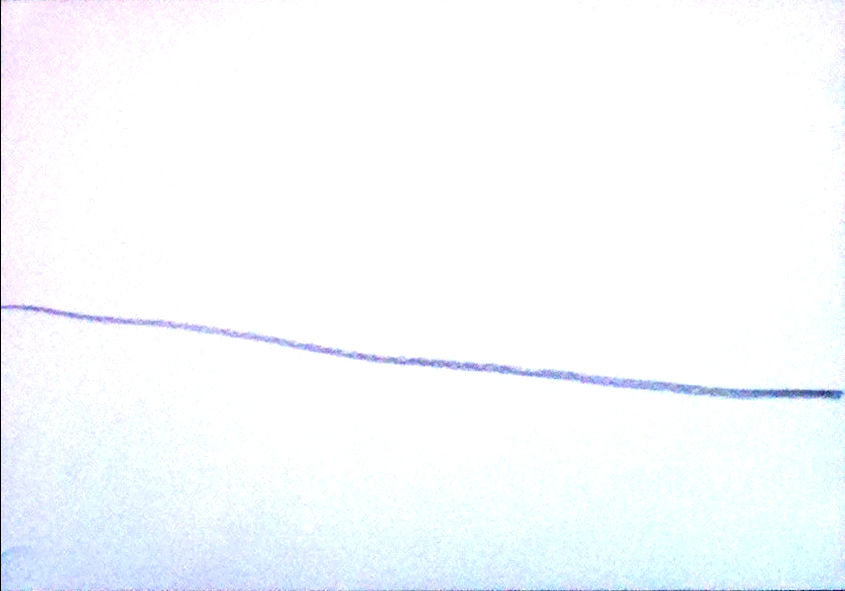
Karen Kaapcke, Burnt Norton (detail), 2012
Kaapcke was eliminating the stupid. She rid herself of color and value, object and perspective, foreground and background. Her universe collapsed into the two most fundamental items: field and line. And the line became mighty, every bit of it sought and answered a question. It became Hokusai's line that "jumps to life as never before."
I caught up with her recently, to study this new work. I said, "Have you gotten anywhere with figuring out what you meant by 'the stupid'?" She said that after much reflection, she had: that the stupid is the received, the automatic, the rote. When you are painting a landscape, and you know how to do the sky, and you go ahead and do the sky that way, on autopilot, without asking, "What is this sky? How does this sky need to be represented?" - then that sky is the stupid.
The stupid is that which you are no longer deciding on for yourself.
Kaapcke said, "I need to enter into the things I'm drawing and painting. I can't sit back from life, I can't look at -- I need my looking to be an interaction, an engaged give-and-take. I need all of my marks to be choices, to constantly reflect how I'm seeing and feeling and learning and doing."
This drive of Kaapcke's, and the means she has found for executing it, are very exciting for me as an artist. It's not like these types of marks are not found throughout the 20th century. But there is a world of difference between these types of marks, and these particular marks Kaapcke herself is making. Her marks have the intensity of those artists who, trained to mastery in representation, became expressionists, or abstractionists -- or, a few generations later, of those abstract expressionists who returned to the figure. The intensity is the same because the origin of the work is the same: it comes from the crisis, from the point where an artist says, "I cannot go on doing it as I have done it; I must find a new way to work."
Apart from locating the crisis at the center of artistic growth, Kaapcke's reflections help us to understand what exactly is growing. Kaapcke restates that it is consciousness that comes first. The heightened awareness spits art out as a byproduct.
I have been training myself to look at more kinds of work than I once did. I'll look at anything these days. Kaapcke's insight verbalizes one aspect of a profound principle of art-making. It helps to explain how the most rendered figuration can be great, or nothing, depending on the piece, and how the most reductive abstraction can also be great, or nothing, depending on the piece. The question isn't idiom. It's how powerfully the artist's awareness enters into company with reality, and how capably their hand acts as an extension of their brain.
Fledgling artists often think, "How will I get my own style?" And soon they figure out: "It is a byproduct of the work, it cannot be forced." At a deeper level, there is a parallel question, "How will I make art?" And it has a parallel answer: "It is a byproduct of awareness, it ought not be forced." Kaapcke's self-excavation throws us into contact with this deep wellspring of art. That's why the work jumps to life.
ONLINE: http://karenkaapcke.weebly.com/
